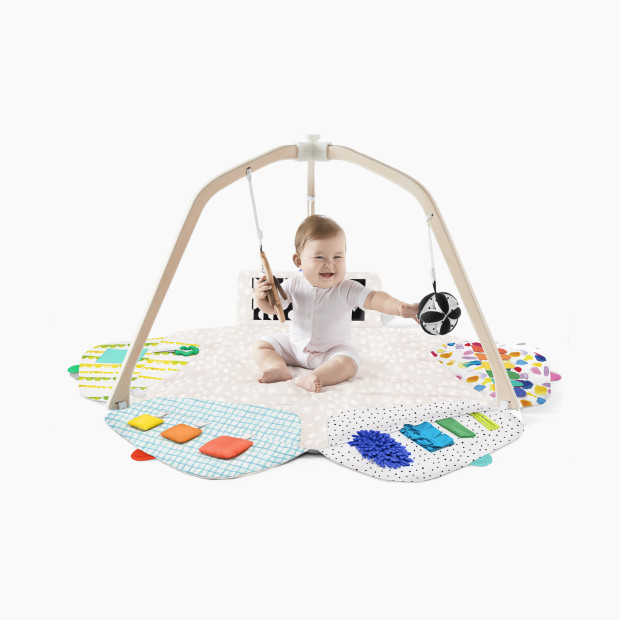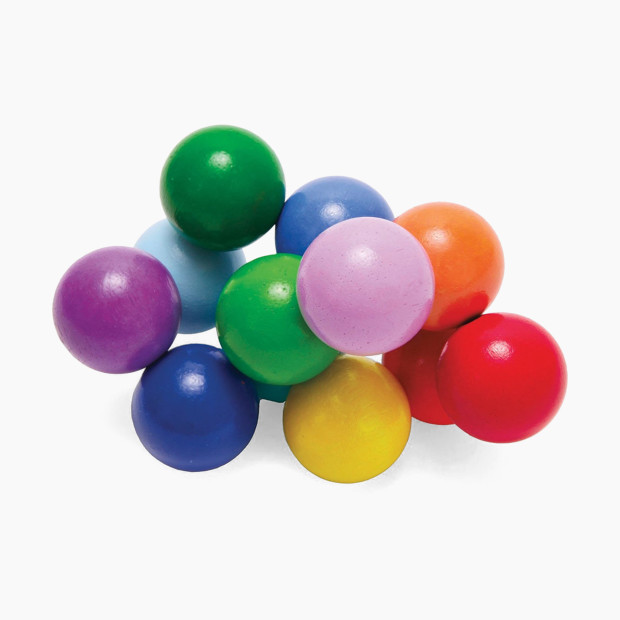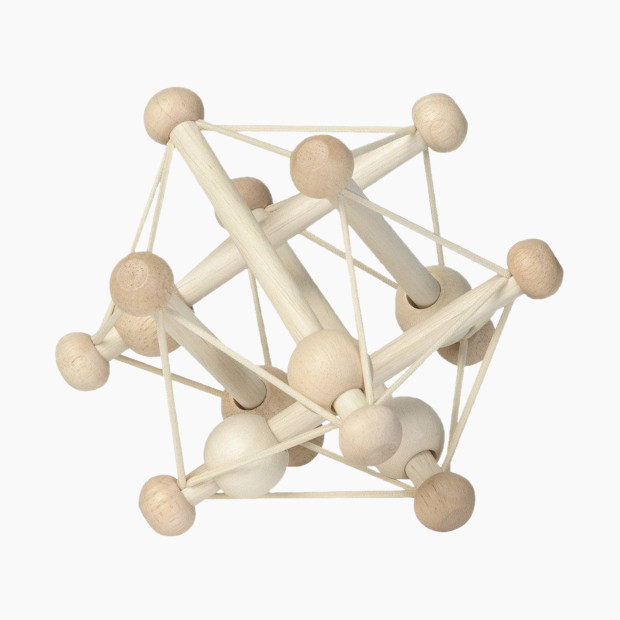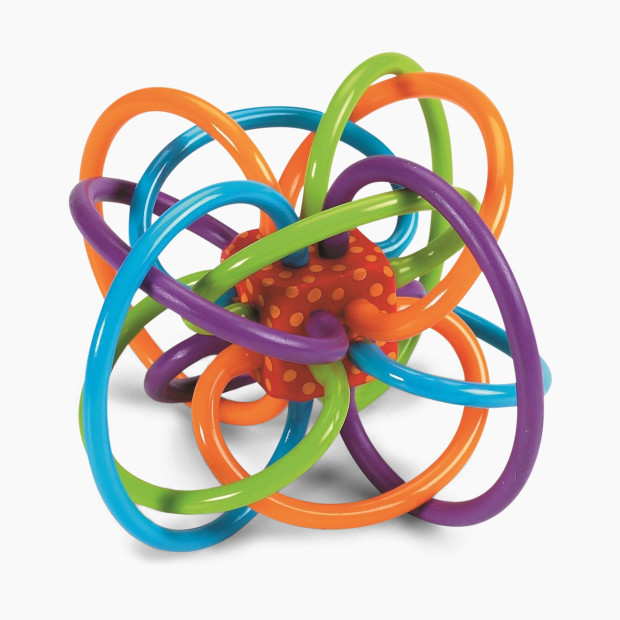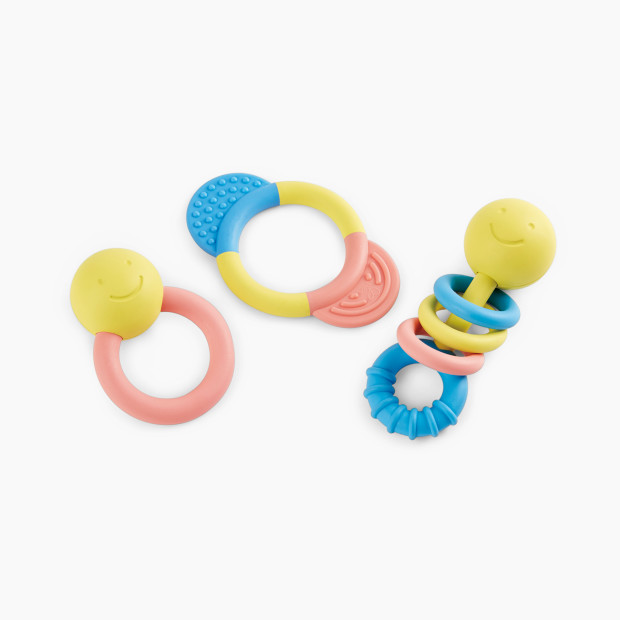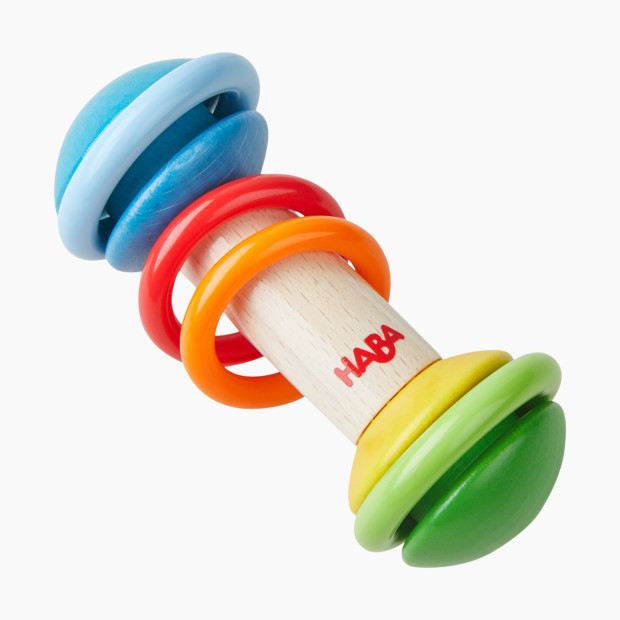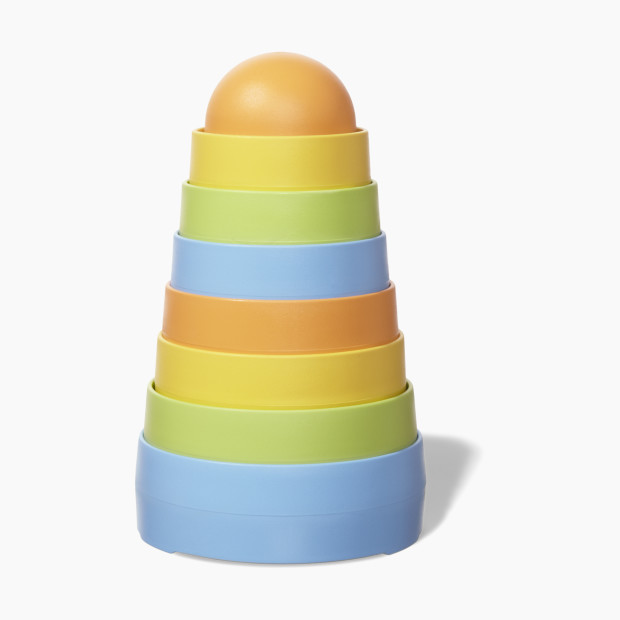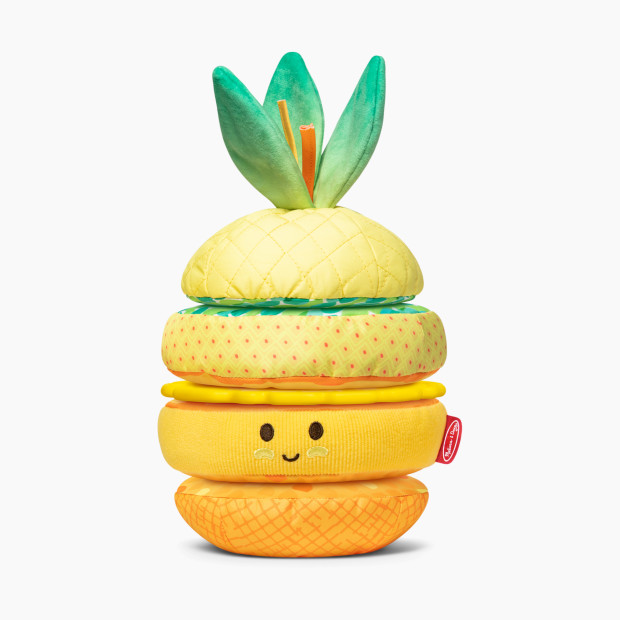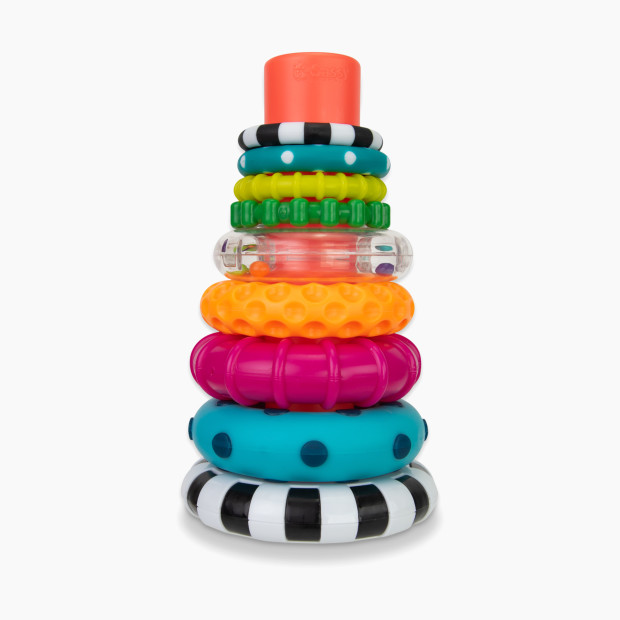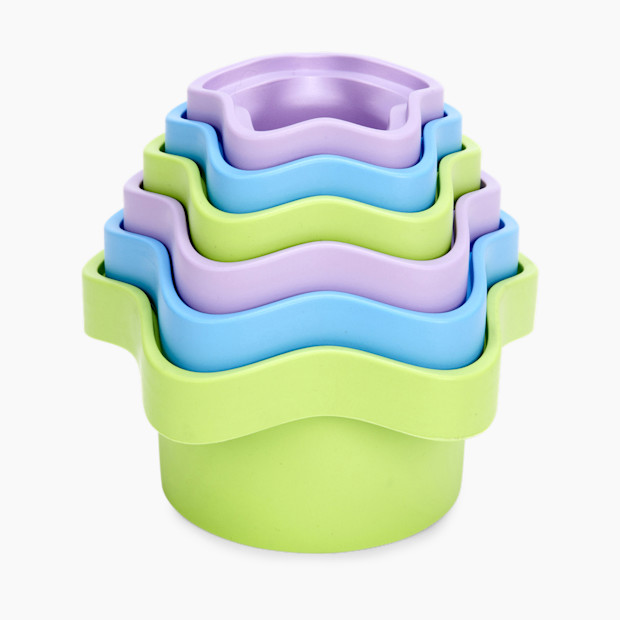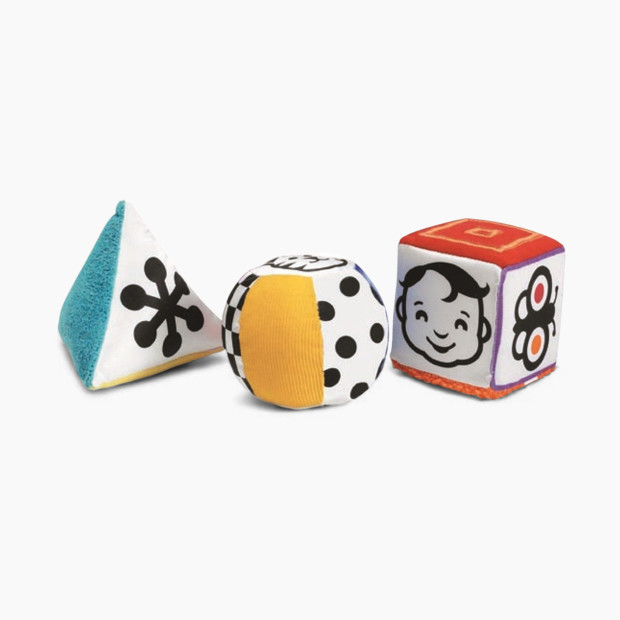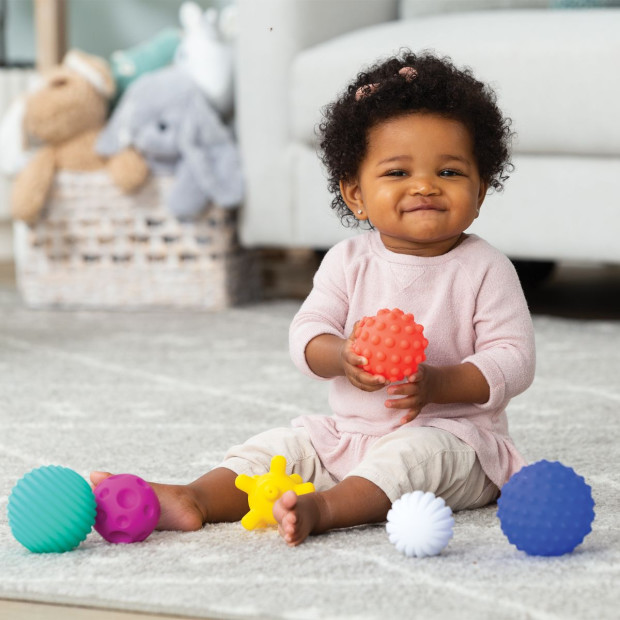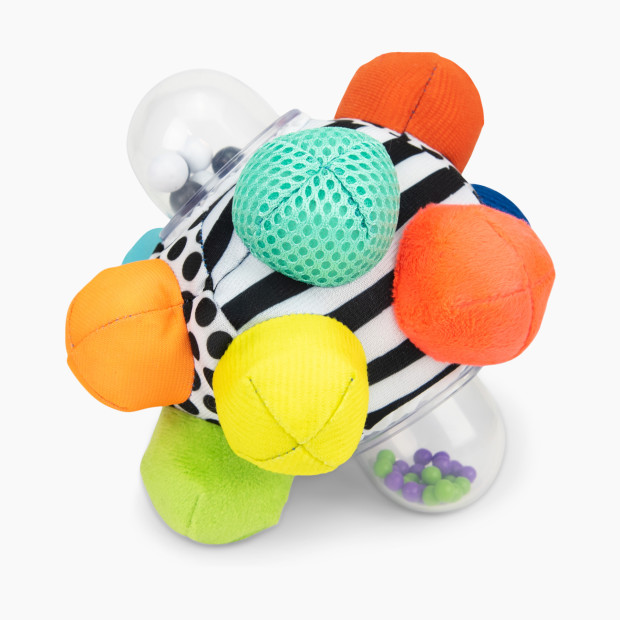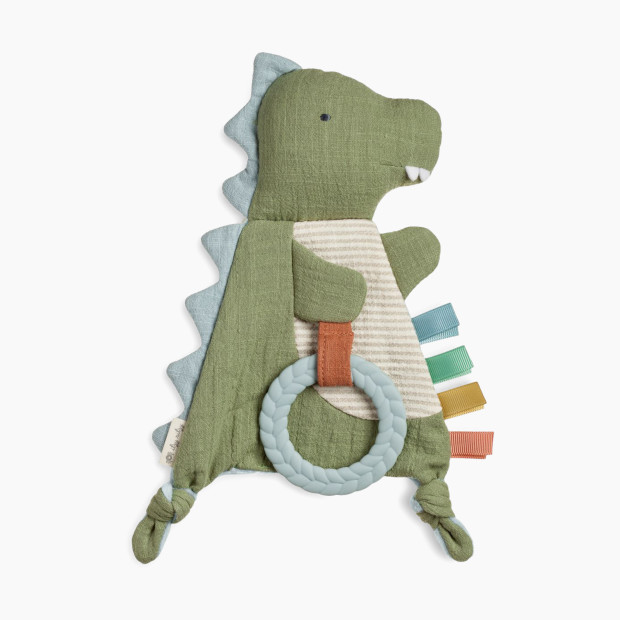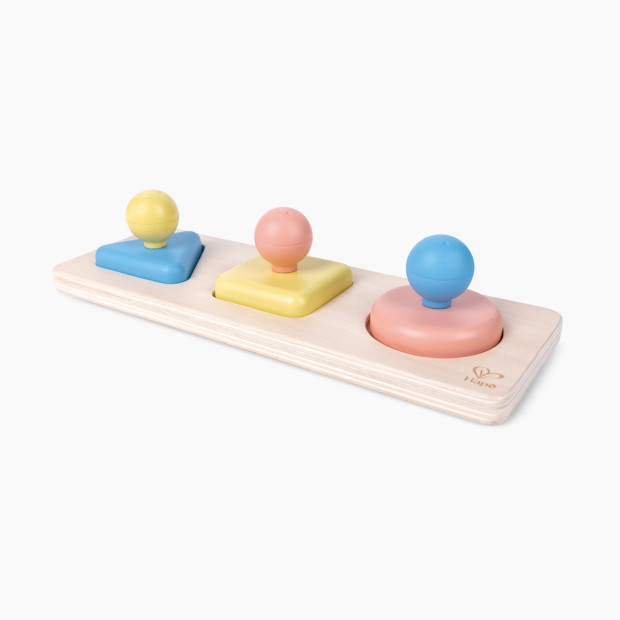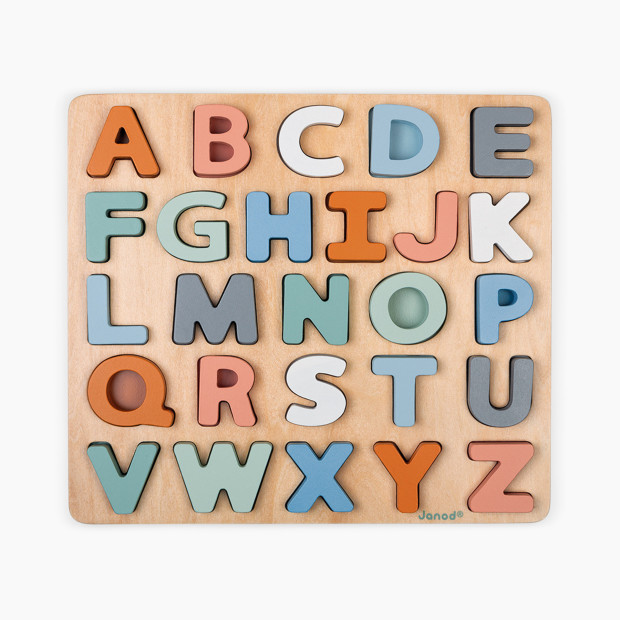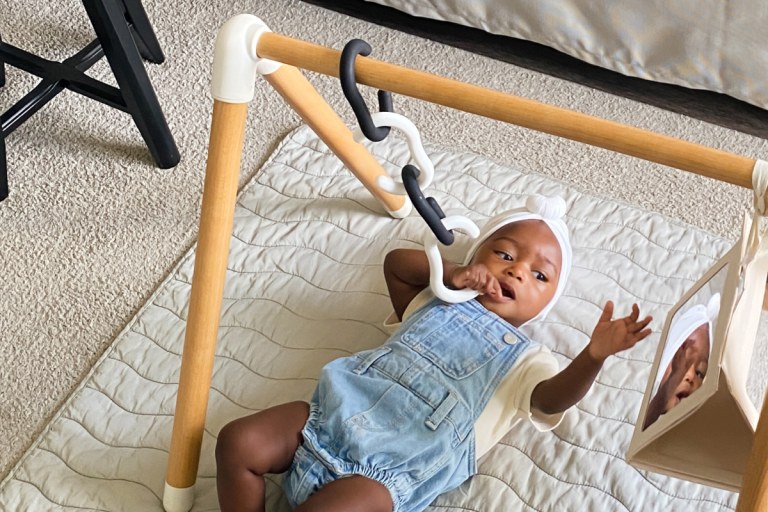
Best Baby Toys to Improve Fine Motor Skills
Fine motor skills help babies explore their world and are even linked to cognitive development.
By Babylist Team
In This Article
It’s pretty fun to watch your baby grab an object or build a stack of blocks (and then knocks them down, of course) for the first time. What looks like a simple, ordinary activity for adults is a pretty big deal for babies, and mastering these types of skills requires lots of practice for your little one.
Fine motor skills—movements that involve small muscle groups like the hands and wrists—are a huge part of your baby’s development. Strong fine motor skills will help your little one better explore the world around them and reach crucial developmental milestones like picking up and manipulating objects, feeding themselves and even turning the pages of a book. “When thinking about infants, the best way to support motor skills is allowing for free movement floor time,” says Katie Zelinski, an occupational therapist and founder of The Well Balanced OT. “That free movement is helping them develop a clear body map, strength and coordination.” And since little ones learn best through play, toys can be a great way to encourage this skill-building while having fun along the way.
Fine Motor Skills in Baby’s First Year
Every baby will develop at their own pace, so try not to get too caught up in what your little one “should” be doing and focus instead on meeting them where they are. “If you do have concerns about delays and they are approaching the end range of development norms, talk to your pediatrician,” says Zelinski.
Here’s what the American Academy of Pediatrics says to look for when it comes to fine motor skills over your little one’s first year.
0 to 3 months:
Opens and shuts hands
Grasps and shakes toys
Swipes at dangling objects with hands
4 to 7 months:
Reaches with one hand
Transfers objects from hand to hand
Uses raking grasp
8-12 months:
Uses pincer grasp
Bangs objects together
Puts objects into a container (and takes them out again!)
Lets objects go voluntarily
Pokes with index finger
Tries to imitate scribbling
How to Use Toys to Boost Fine Motor Skills
The first 12 months of your baby’s life is a time filled with exploration, discovery and learning. And while your little one’s brain may be changing and growing in lots of complex ways, your playtime together can (and should) be simple, straightforward and, most of all, fun.
The best baby toys are the ones encourage development in lots of different ways. Use them to interact with your little one while you’re holding them on your lap, during tummy time or lying down together on a playmat. Something as simple as shaking a rattle in front of your 12-week-old and encouraging them to reach for it is a great way to start building fine motor skills. As your baby gets older and starts learning to sit up and eventually crawl and walk, you can adjust your playtime accordingly.
Best Toys to Improve Fine Motor Skills
Best Play Gyms for Babies
These picks are a great place to start for motor skill development. They provide your baby with a safe, comfortable place to explore their surroundings and have engaging toys attached that they can practice reaching for and eventually grabbing!
Best Grasping Toys
Clutching and grasping are some of the first fine motor skills your baby will learn. They set the stage for more intricate movements later on, so it’s important to encourage your little one to work on these skills by offering engaging toys that are fun to hold, shake and rattle.
Best Nesting Toys
What’s the opposite of stacking? Nesting! Nesting cups are another great way for your baby to work on fine motor skills, and they’re a perfect example of a simple, open-ended toy that holds so many play possibilities. An added bonus? Most nesting toys can be flipped over and stacked. They also make fun sand or water toys.
Best Puzzles
Solving a puzzle makes practicing fine motor skills fun for little ones, but you’ll want to make sure the pieces are large enough to minimize any choking risks, especially for younger babies. When shopping for baby puzzles, keep in mind that the fewer pieces the better and puzzles with knobs for easy gripping are a great choice since they target the hand muscles and coordination necessary for later writing skills.
Expert Sources
Katie Zelinski, Occupational Therapist and founder of The Well Balanced OT. Her career has focused on working in pediatrics in early intervention, schools, and outpatient clinics. She currently lives in Cleveland, Ohio.

